How to model reasonable VRF EIRFPLR curve with insufficient data
I referred to this great paper and customized VRF performance curves by regresson analysis.
I used Daikin's techinical data. The technical data are sufficient except for Part‐Load Performance Data. There are power input data with PLR between 0.5 to 1.3. Data with PLR between 0.1 to 0.5 are missing.
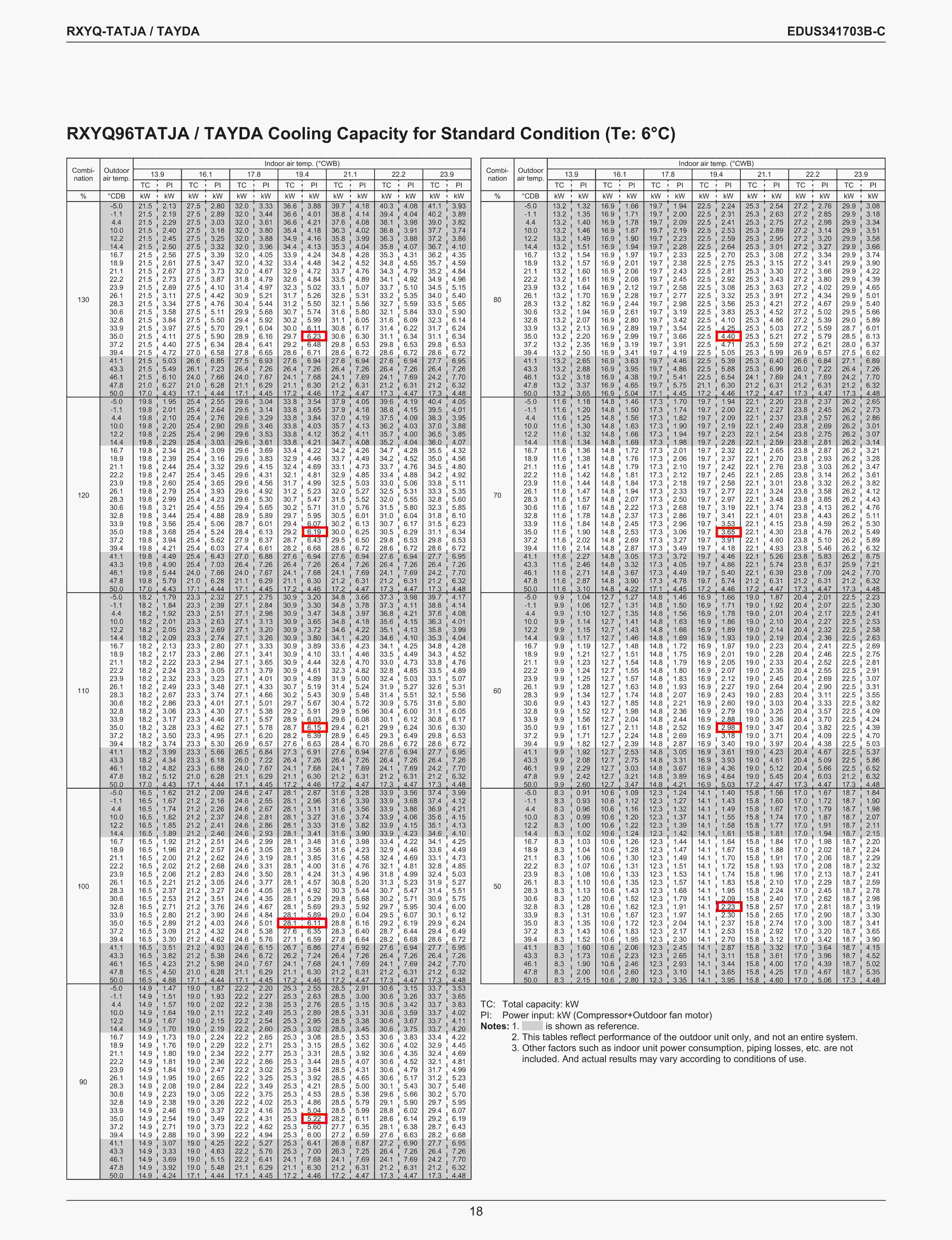
The situation is the same with the paper I mentioned above. So, I think VRF manufacturers do not normally provide power input data with PLR less than 0.5. If that's the case, is it acceptable to predict EIRFPLR curve in the absence of data with PLR less than 0.5? That's my question.
The regression analysis of CoolingEIRLowPLR is as follows.
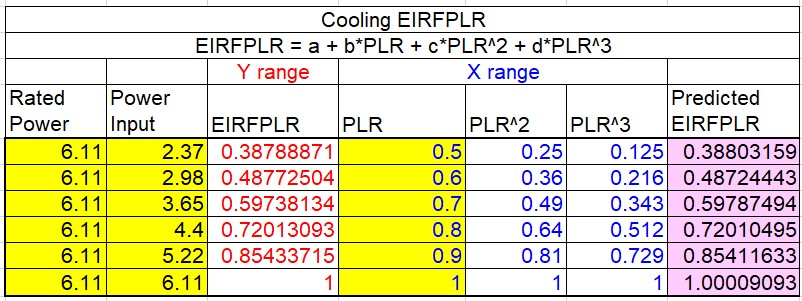
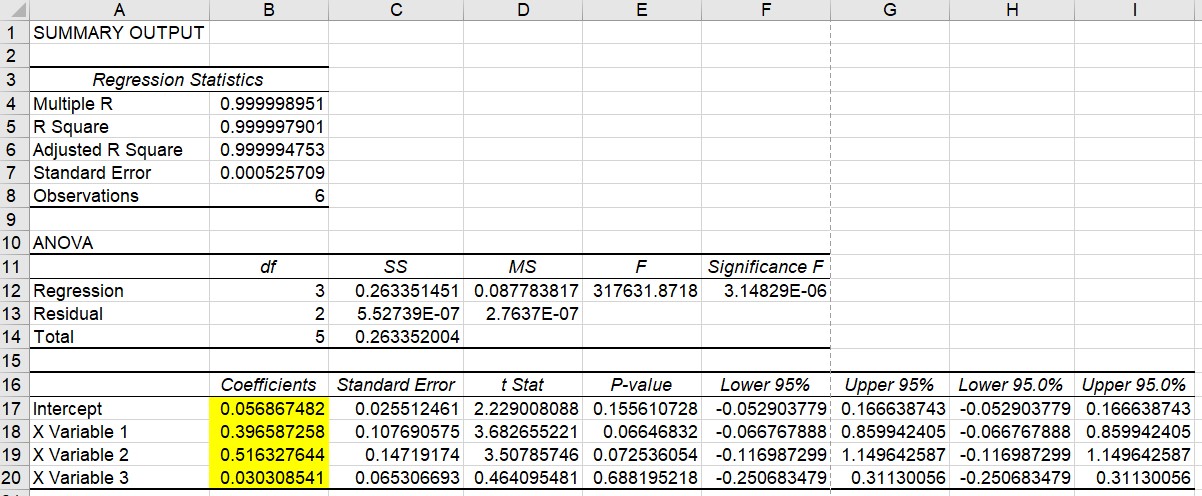
The chart below compares CoolingEIRLowPLR curves with the default one in EnergyPlus and the customised one from Daikin technical data. The curve circled in red is the part supplemented by regression analysis.
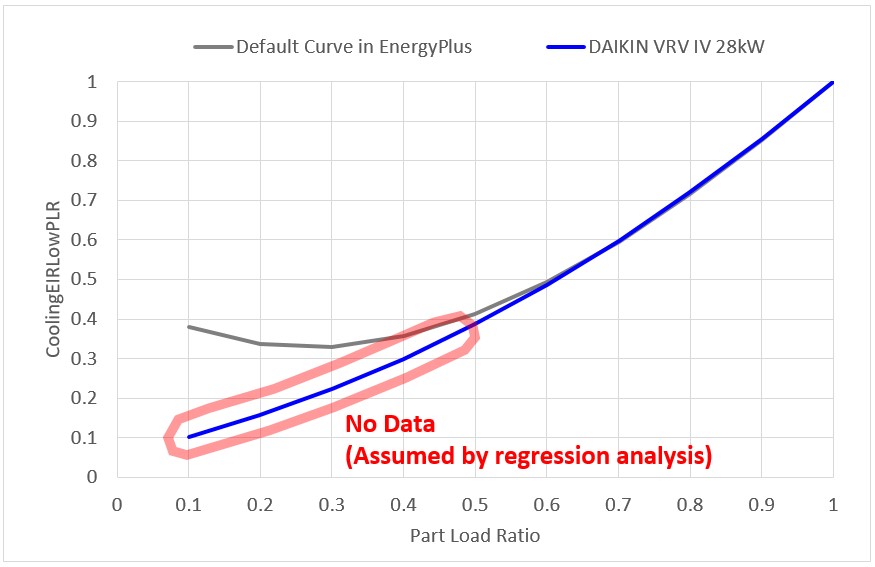
For clarity, let's change the chart a bit. I divided PLR by CoolingEIRLowPLR. The chart below can be regarded as the correction factor for cooling COP. This chart is more familiar, at least to me.
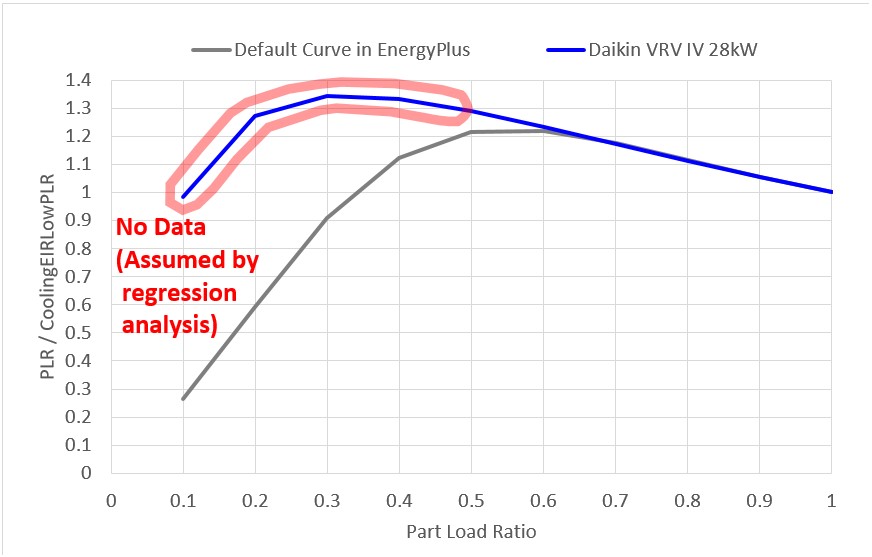
The default curve in EnergyPlus has a poor COP at low part load. I think this default curve is out of date. Below is an extract from Daikin's VRF catalogue issued in 2015. The compressor efficiency at low PLR already improved a lot in 2015. However, the customised curve by regression analysis appears to overestimate the efficiency at low part load a little. That's what bothers me.
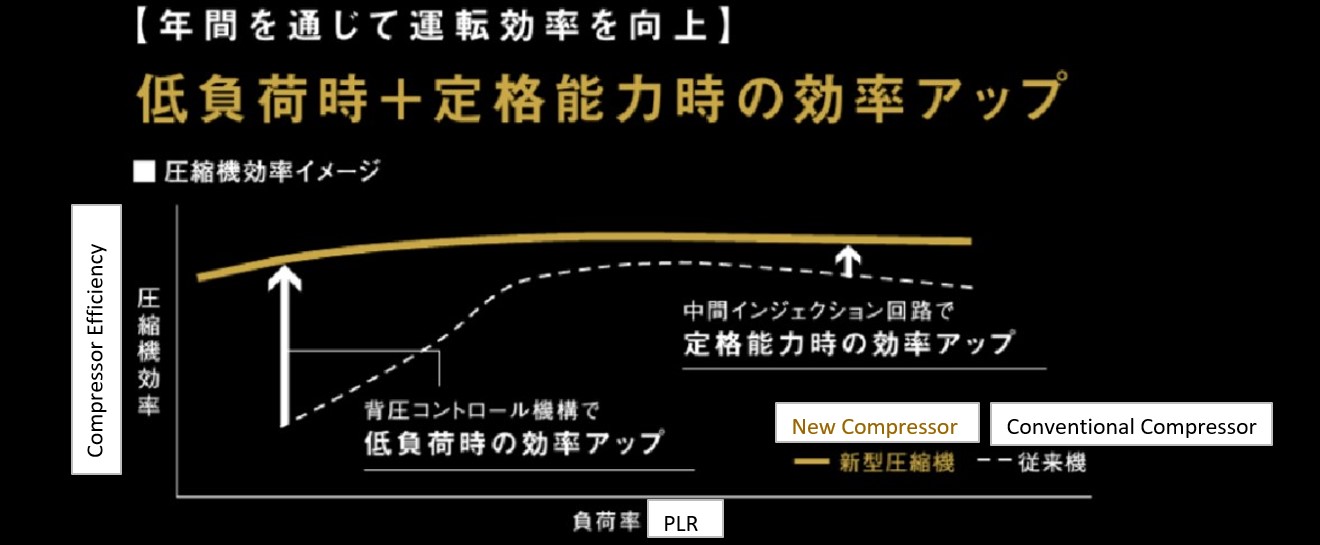
I don't want to use the default poor EIRFPLR curve, but the customized EIRFPLR curve might be too good. Can I use the customised EIRFPLR curve? Or is there any way to improve the accuracy of regression analysis with insufficient data at low PLR?
The regression data can be found here for your reference.

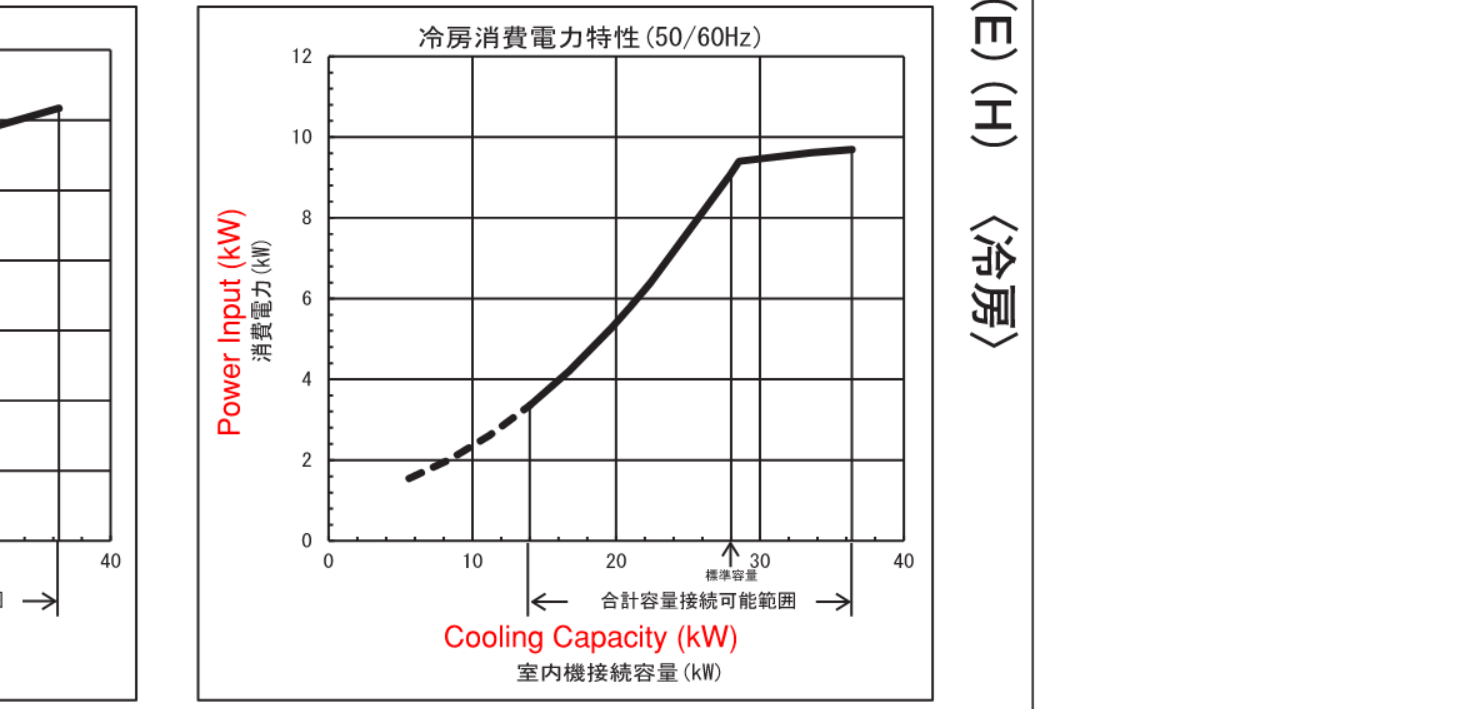
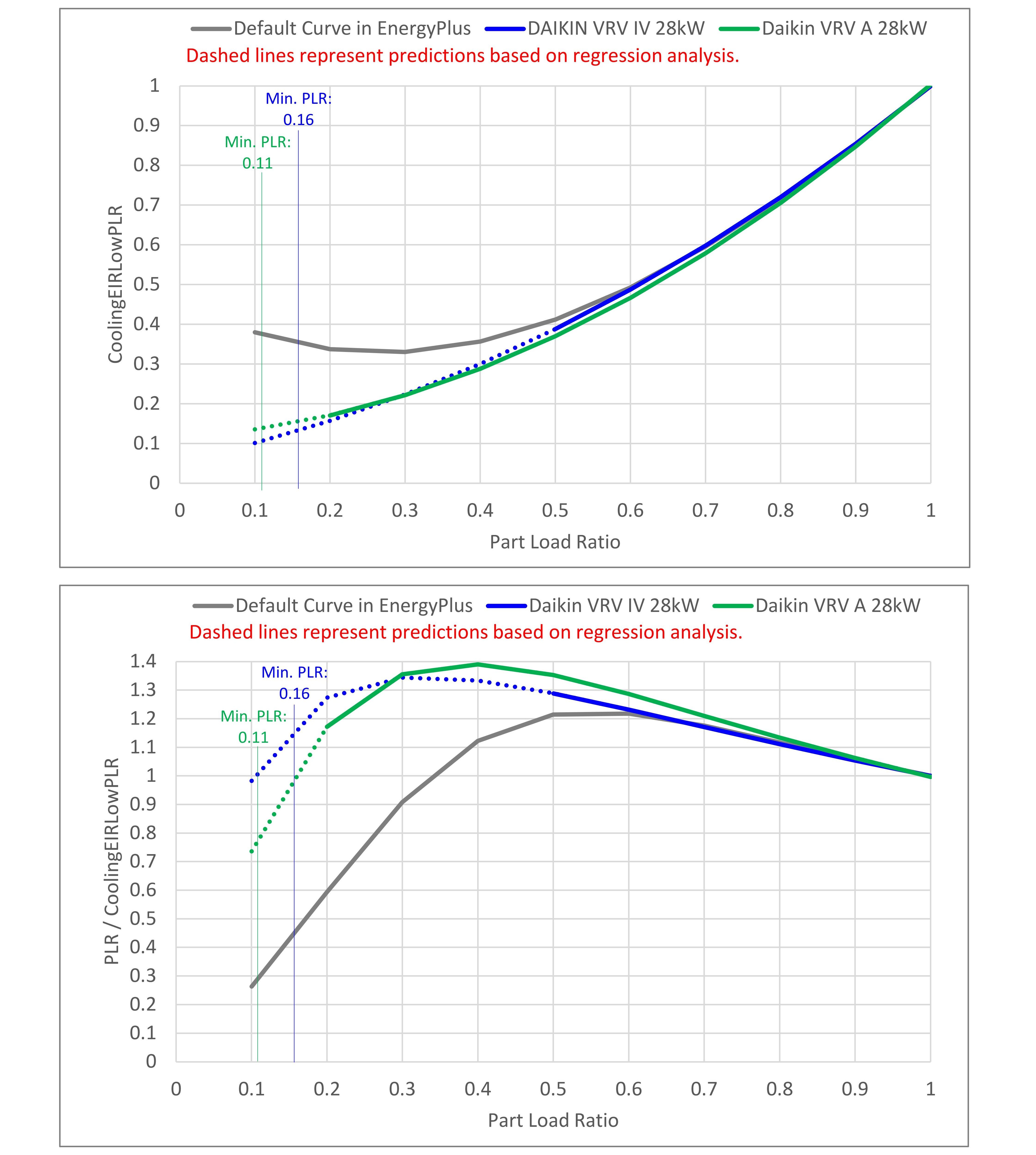
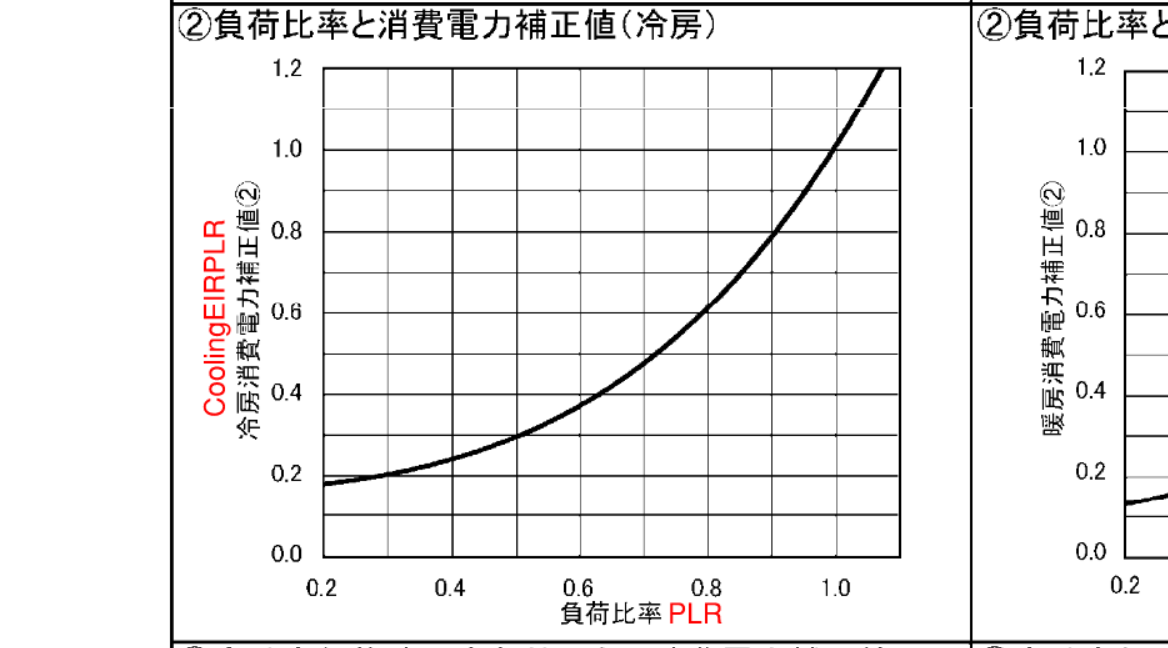
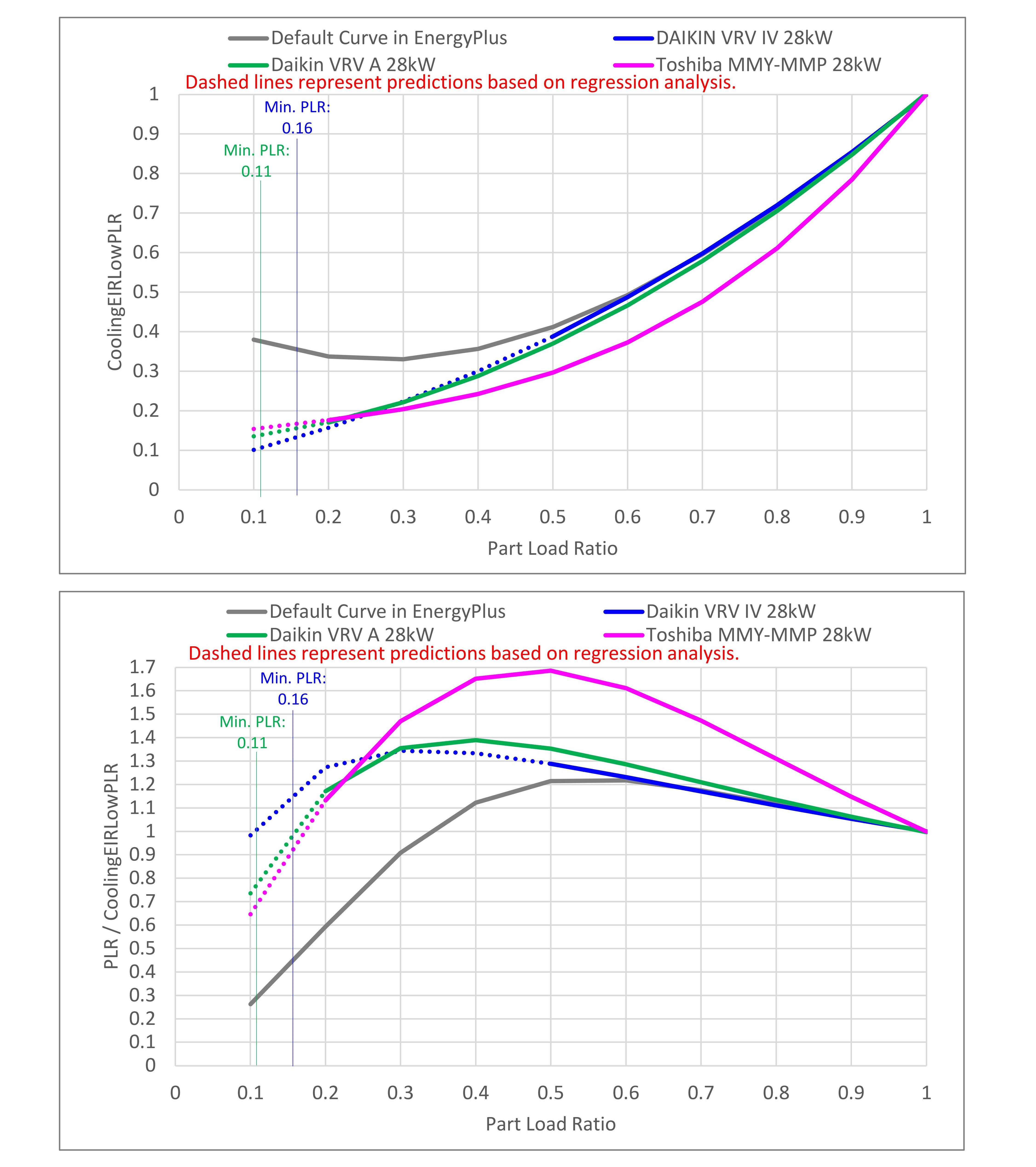



@rraustad, your advice would be greatly appreciated.
@rraustad, thanks for your comment above, but is it in response to this post?
My question here is whether regression analysis is appropriate in the absence of data with a PLR of less than 0.5.
For VRF, or any vapor compression system really, you need to predict the curves down to MinPLR. Yes, the manufacturers do not typically provide that information so you will either have to work with the manufacturer or use your own judgement. I assumed that the VRF suction temperature would not significantly change at low PLRs, and if that were true then it would take more power to create that condition than if the suction temperature were allowed to float up. I have been present at AHRI certification for VRF systems and those tests do not accurately represent field performance.
Regarding the last figure, which looks like it came from the manufacturer, I would need to know where those data came from to understand their accuracy with regard to this question. Are these data from AHRI tests? Field data? Computer model? etc. And as @Jim Dirkes mentined, maybe these systems have improved over time, in which case the default curve should be updated.
I'll try to ask manufacturers to provide data down to MinPLR.
About the last image from Daikin's Catalogue, it is not so quantitative, and I think the test condition is under JIS (Japanese Industrial Standard) which is slightly different from AHRI.